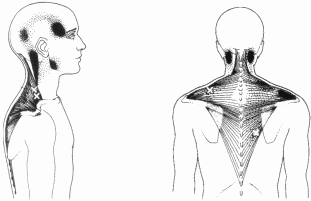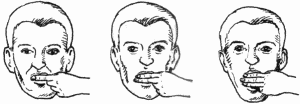Taking Control of TMJ: A Review of the Book
Most people will understand why we’re talking about a book on TMJ – that is, temporomandibular joint disorders, on a site about headache and migraine. What not everyone understands is the complex relationship that TMJ can have with various other disorders.
In his book Taking Control of TMJ, Dr. Robert O. Uppgaard does give us some insight into how issues in the TMJ, the jaw joints, can come from problems in the rest of the body, and can also cause problems all over the body. Headaches in the temple, migraine, fibromyalgia, whiplash, mayofascial trigger points – this is not a simple linear relationship, but a web of relationships that Dr. Uppgaard takes seriously.
 |
At only 184 pages (included a glossary, index and appendices), there’s a lot of information packed in a small space, which most people will appreciate. And this isn’t just a book of information on TMJ disorders – it really is a workbook.
And I think that’s what I like best about Taking Control of TMJ – it’s very practical. It’s packed with tips and how-tos, diagrams and charts, but also simple checklists for you to work through.
The smallest tips can be the most helpful. For example, I always used to end up with migraine attacks on days I visited the dentist. Dr. Uppgaard’s tip, slipped in on the end of page 51? "Tell your dentist to allow you to exercise your jaws intermittently during dental work."
I wonder how much pain that simple tip could have saved me?
And how many books have I said that give vague instructions about how to do various exercises, leaving me with no idea if I’m doing it right? The clear and specific instructions, with diagrams, leave me with something I can actually use. Dr Uppgaard even gives examples of case histories and why, from his experience, these exercises can benefit you.
Here’s an example:
Exercise 2: Stretching the Jaw and Increasing Range of Motion
Purpose: This exercise helps you to relax the opening muscles, stretch the closing muscles, and remediate limited jaw opening.
Precautions: Do not do this exercise if your jaw is is acutely strained or if you experience grating, clicking, or popping.
The Exercise: Do the exercise for one to two minutes, twice a day. Use ice or moist heat, whichever feels comfortable to you, over the sore area of the muscle as you do this exercise.
- Gradually increase your jaw opening by placing one knuckle or an object of equivalent size between the teeth.
- Rest on knuckle or object for sixty seconds.
- Increase to two knuckles and finally three, as you feel comfortable.

Of course all this is in a context of many exercises and tips and what needs to be used when and by whom.
Another thing I appreciate about this book is that it draws (selectively) from a wide range of other experts. There are other sources you can read for more information, of course, but a lot of the research from various other sources is right here in the 184 pages. You’re not left feeling like you have incomplete information.
Not that you’ll agree with every expert. There’s a difference of opinion, for example, on the significance of the origins of yoga. Dr. James Baltzell, the book’s expert on the topic, differentiates between yoga and religion, but doesn’t take into consideration the importance of yoga’s religious roots. In my opinion, it’s important to understand clearly where treatments come from and what they’re attempting to accomplish before choosing what to focus on.
That aside, the majority of the information here is excellent, and for such a short book the breadth of practical information is amazing.
As I started out saying, the connection between TMJ disorders and migraine or headache disorders is complex, and Dr. Uppgaard recognizes this. Now many people have had almost complete healing after dealing with TMJ issues, and the book has many amazing examples. On the other hand, for many people TMJ is one of a complex web of problems.
But the fact is, many people with chronic migraine or headache diseases have major TMJ disorder related problems and don’t realize it. By dealing with the issues that Dr. Uppgaard will take you through, I’m convinced many people can see a significant improvement.
This is one book I will actually be able to use, because it’s so easy to pick up and work with a few minutes at a time. Without presuming to be the solution to everyone’s problems, Dr. Uppgaard provides practical, easy to follow tips that more of us need to pay attention to.



